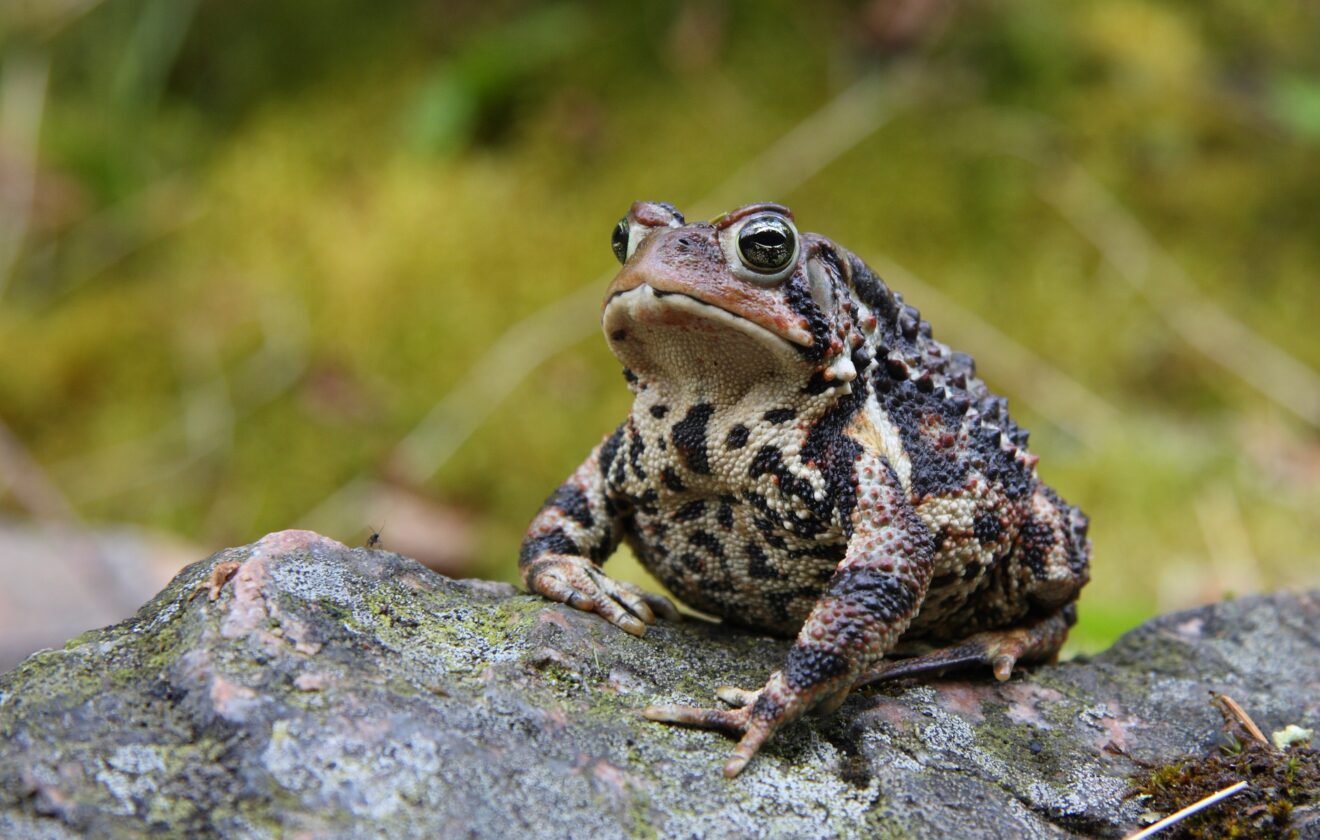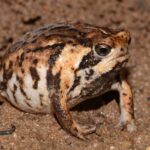Anaxyrus americanus: The Remarkable Life of the American Toad#
Introduction#
On warm spring evenings across much of Eastern North America, a gentle yet unmistakable trill fills the air—rhythmic, resonant, and ever-welcome. This distinctive symphony is the mating call of the American toad, scientifically known as Anaxyrus americanus. Often underestimated in prominence, this adaptable amphibian quietly supports ecosystems from backyard gardens to dense forest floors, playing a pivotal ecological role many people may overlook.
Though they might evoke fanciful legends about warts or fairytale transformations, American toads harbor secrets far more captivating and scientifically significant. Adaptable, resilient, and surprisingly charismatic, their subtle charm is complemented by fascinating biological adaptations and behaviors that provide scientists and nature enthusiasts alike endless intrigue.
Taxonomy and Classification#
Anaxyrus americanus, previously referred to as Bufo americanus, is a species belonging to the family Bufonidae—the true toads. Within the vast kingdom of Amphibia, the Bufonids comprise a robust family known for their dry, warty skin, parotoid poison glands, and terrestrial habits. The genus Anaxyrus collectively identifies a group of American toads distinguished from their European and Asian counterparts.
Two important subspecies of the American toad exist: the eastern American toad, Anaxyrus americanus americanus, and the less widely distributed dwarf American toad, Anaxyrus americanus charlesmithi. Closely related species include Fowler’s toad (Anaxyrus fowleri), often confused by casual observers, yet set apart by subtle differences in appearance and mating call.
Natural Habitat#
The American toad flourishes throughout the eastern half of North America, from Canada’s southern provinces southward into the heart of the United States. Their remarkable adaptability enables them to thrive across diverse ecosystems—moist forests, shady suburban backyards, open fields peppered with wildflowers, wetlands, and even urban gardens.
Preferred habitat subtly shifts seasonally. During breeding months, toads seek shallow freshwater pools, puddles, ponds, and slow-moving streams. Come cooler seasons, shelter beneath logs, loose earth, or leaf litter provides vital insulation through harsh winters. Their ability to survive even heavily altered human landscapes underscores their impressive adaptability.
For the tireless observer, their preference for terrestrial shelters such as leaf litter or gardens presents ample opportunities for backyard encounters. These nocturnal amphibians quietly patrol their chosen habitats at dusky hours, emerging from hiding to hunt insects under cover of darkness, their subtle movements hidden beneath the gentle cover of twilight.
Physical Characteristics#
Modestly sized yet undeniably hardy, the American toad typically measures between 2 and 4 inches in length, females being slightly larger than males. Their skin, rough and textured with distinctive warts, is a stoic departure from the slippery sheen of frogs. This granular texture is enhanced by prominent, enlarged parotoid glands behind the eyes that secrete a mild defensive toxin intended to deter potential predators.
The color palette of the American toad is diverse and adaptive, ranging from muted browns, grays, and greens to rusty reds and yellows. Variations in hue often reflect their local surroundings, lending them an impressive, if understated, camouflage that conceals them from hawk-eyed predators above and earthbound hunters below. Their abdomen bears a lighter shade, an array of creamy whites or subtle pinks dotted with scattered dark speckles.
Feet designed for a terrestrial lifestyle boast short yet sturdy legs and strong, burrowing toes. The hind limbs are muscular and swift—primed for sudden leaps and quick evasions, although they rarely achieve the great distances of more agile frog cousins. A careful glance at their eyes reveals golden-toned irises, possessing horizontally elliptical pupils that lend them excellent nocturnal vision.
Behavior and Life Cycle#
Calls of Courtship#
With the thawing embrace of early spring rains, American toads emerge from winter dormancy, driven by a strong reproductive instinct toward temporary pools and shallow streams. Male toads are masters of vocal performance—using a prolonged, melodic trill to entice receptive females. The collective chorus of dozens, even hundreds, of singing toads can become a wondrously deafening outdoor concert under the moonlight, a celebration of renewal in areas still shaking off winter’s spell.
Reproduction and Development#
Once paired, females deposit long strings of jelly-like eggs—often numbering over a thousand—in the water. Tadpoles hatch within a week or two and begin a busy life of grazing algae, aquatic plants, and tiny organisms. Swiftly maturing, tadpoles soon sprout legs, lungs develop in place of gills, transforming into miniature versions of adult toads within just 6 to 10 weeks.
Freshly metamorphosed individuals venture away from watery homes to embrace new lives on land. These juveniles, smaller than a thumbnail, face long odds as they dodge countless dangers. Those who endure through their first hazardous months can comfortably reach maturity within two to three years, managing lifespans that may extend a decade or longer in favorable conditions.
Nocturnal Hunters#
By night, adult American toads pioneer terrestrial explorations, seeking insects such as crickets, beetles, moths, earthworms, and even slugs. Exceptional eyesight, sensitive to motion and geared toward dim light, coupled with a keen sense of smell, equips them as skillful hunters. Their sticky, catapulting tongues snap prey into their eager mouths with startling efficiency.
Ecological Role#
Beneath their humble guise, these modest-sized creatures undertake essential ecological duties. Their voracious appetite for insects helps regulate pest populations naturally, providing irreplaceable pest control services vital for healthy ecosystems and human agriculture alike. By curbing insect outbreaks, American toads enhance crop yields and reduce the reliance on chemical pesticides.
On the food web’s reverse side of fortune, these amphibians sustain a multitude of predators—snakes, birds, mammals, and even larger amphibians recognize their ecological importance. Their presence as both predator and prey marks them as indispensable, central members of their ecosystems.
Threats and Conservation Status#
While classified as Least Concern by the International Union for Conservation of Nature (IUCN), Anaxyrus americanus faces significant pressures from habitat fragmentation, pesticide contamination, invasive species, and emergent amphibian diseases such as chytridiomycosis. Populations adjacent to dense urban environments particularly carry elevated risks; human activity and development continue eroding vital protective habitats.
Thankfully, public awareness and advocacy have improved conservation initiatives significantly in recent years. Efforts such as wetland restoration, pesticide reduction campaigns, and community education programs aimed at responsible land usage actively benefit local populations. Despite conservation gains, vigilance remains crucial as new threats continually emerge, demanding comprehensive understanding and stewardship.
Cultural and Scientific Significance#
Historically entwined with folklore, American toads occupy rich cultural symbolism in North America. Myths about them causing warts—or even bringing good fortune—underscore their long-standing human curiosity and fascination. More practically speaking, their responsiveness to environmental changes makes them valuable indicators of habitat health, alerting scientists to looming ecological threats.
In modern science, researchers increasingly recognize amphibians like the American toad as sentinels for ecological integrity and early warning signs of broader environmental stress. Exploring the subtle complexities of their biology has yielded valuable insights into toxicology, endocrine studies, climate change impacts, and biodiversity assessments.
Conclusion#
The modest American toad, Anaxyrus americanus, remains quietly significant, gently whispering profound messages reflecting both resilience and ecological vulnerability. Appreciating their presence means recognizing the interconnectedness of nature and committing ourselves to conservation practices supporting not only American toads, but countless intertwined plant and animal species. As human interactions with the natural world deepen, these charismatic amphibians remind us that respecting the smallest beings can profoundly impact the wider ecosystem—and ultimately our own survival.
Let your backyard or local park remind you of this subtle yet wonderful creature—in every gentle trill, nature calls us all to embrace stewardship and responsibility for protecting biodiversity in our shared environment.















